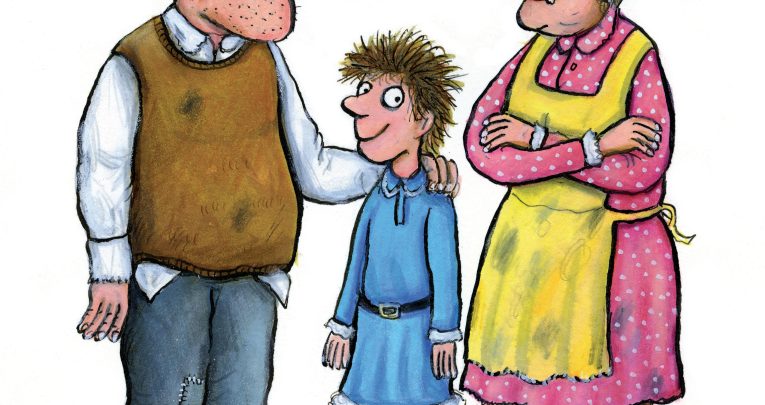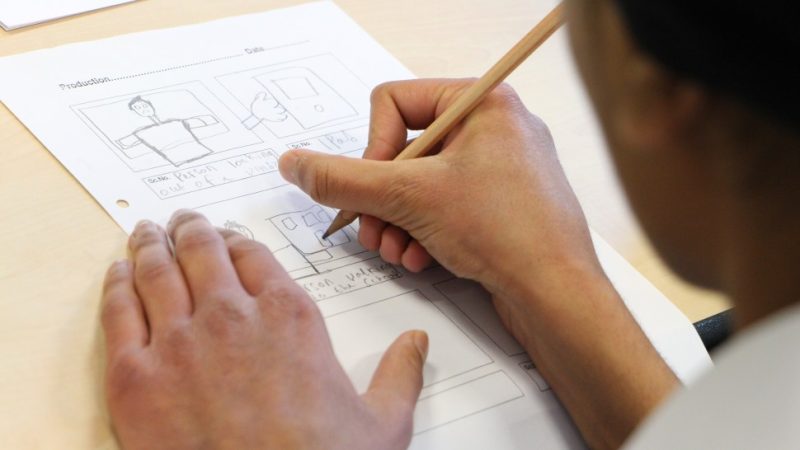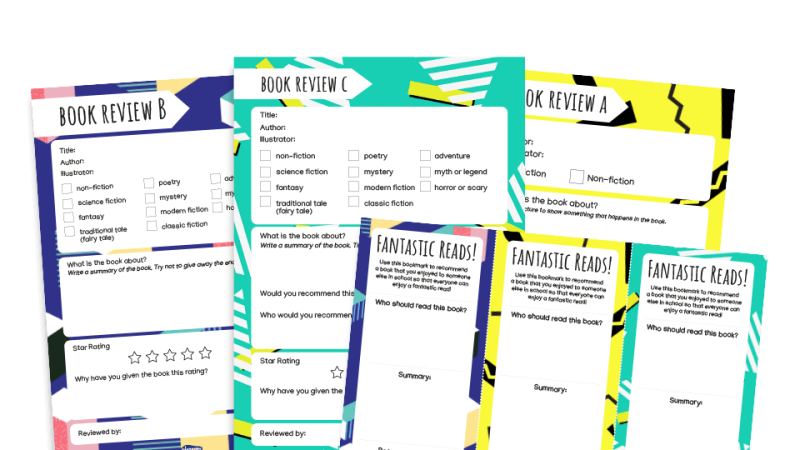What Could A Pop-Up Book Festival Do For Your School?

What happens when Philip Ardagh and Axel Scheffler pop up in your school? Kids get curious – about Gruffalos, Grunts and size-16 feet…

I once curated a tent in a London Square, where adults were only granted access if accompanied by a child.
Mine was one of a handful of tents of varying shapes and sizes, but my tent contained a corner of an upside-down room. Built especially for me by students from St Martin’s College of Art, it had a laid-table – candle and all – hanging down from the ceiling (which looked like a floor), and an upside-down picture (of me of course) on the wall.
Along with a few other odds and ends, this meant that if you were photographed sitting on the floor (which looked like a ceiling) and then turned the photo the other way up, it looked as if you were somehow sitting on the ceiling. Confused? How do you think I felt? Who’d have guessed be a children’s author could be so much fun?
Elsewhere in my tent, which was erected for the very first Pop-Up Festival, there were optical illusions on the walls, and by the entrance there was a table, covered in a red table cloth, in the middle of which was a small, green, wooden cage covered in warning notices. In the cage, amongst the foliage, was a small, snarly creature. This was really a glove puppet operated by my invaluable assistant, who was also the person who’d cut the hole in the table-top and table cloth to fit her arm through. (See what I mean by invaluable?) So good was her puppetry, no child dared stick a finger through the tiny, wooden bars.
I also hired two professionals: a close-up magician, who has since turned up in Downton Abbey as a love interest for Lady Mary, and a human bush. Yes, you read that right, he looked like a piece of topiary made from a privet hedge: a privet-hedge person. He was superb, though the victim of a little too much attention from a group of particularly boisterous children.
Getting the most from what’s between the covers
Now, I suspect that the brighter ones amongst you have spotted a theme here. This was a tent where nothing was quite what it seemed. It was my very own House of Illusions and I peopled it with guest authors accordingly, each weaving his or her own word magic. As a genuine two-metre-tall giant with a genuine bushy beard and genuinely large feet, I was about the only thing there that was what it seemed. This was a place of wonder, with the wonder of stories – the wonder of words – at its very heart…
… and that wonder of words has continued, in a different form, in my subsequent involvement at Pop-Up. One of the things that makes Pop-Up so different from the majority of children’s festivals is that each class involved gets a set of the author’s book in advance – That’s me! I’m the author! That’s my book! – so the classes have a real opportunity to use it as little or as much as possible long before we arrive.
When I say ‘we’, I’m not referring to me and t’other authors but to me and my illustrator because, for the past couple of years, I’ve shared my events with the illustrator of The Grunts series. When I say my illustrator, I don’t actually have him all to myself. His name is Axel Scheffler and he’s known to have done the occasion illustration for other authors such as Julia Donaldson. In fact, he’s the man behind the woman behind The Gruffalo (if they all stand in a neat line). By having the books in advance, this means that Axel and I have been able to go into classrooms, school halls or theatres in the knowledge that just about every child in the audience has at least some rudimentary knowledge about the characters or story Many may have drawn pictures or done some off-shoot writing of their own.
Then comes the event: PowerPoint pictures, Axel drawing on a flipchart and, in the forefront, me running around waving my arms about, and talking, talking, talking. I’m forever asking questions, answering questions and getting the children as involved as possible. Though centred around The Grunts, we get to discuss reading and writing in general too. Tips. Hints. Ideas. Advice.
The heat of a five-bar heater
At some events, I’ve even had children come on up to act out elements of a story, using my What If…? approach (“What if this happens, then that might happen which then, logically, leads to this…”) based on ideas from the audience, shaped and guided by me as the story progresses. To begin with, it’s usually the brave ones who hesitatingly put up their hand to make a tentative suggestion. 10 minutes in, and there’s generally a forest of hands, and it’s hard to get them not to shout out their suggestions, they’re that engaged and excited.
After the events, some children have then gone away and through their own initiative finished the story, or edited it, or re-told it the way they think it should have gone. All three approaches are fine by me! They’re using their imagination; writing; planning; making the stories their own.
Last year Axel and I opened the festival with two events in Essex, which involved the entire Y4 from across all the schools in Canvey Island. What a reach! All of whom had copies of The Grunts and were clued up before I even opened my (lovely) mouth. So the books have a life before, during and after the event, where pupils and teaches can do more reading and more projects based around the books.
What has been amazing has been the feedback. Yes, it’s wonderful to hear things from teachers, school librarians, classes and individual students, but Pop-Up also has the statistics to prove the success of such initiatives. After our visits to Hackney, both reading and writing levels improved in literacy tests to such a degree that I generated the heat of a five-bar heater, such was my glow of pride, whilst Axel doodled Gruffalos on his toes.
Pop-Up puts books in the hands of children from more deprived and often more ethnically diverse areas, and really helps them to get the most out of what’s between the covers. Long after we’ve been and come and gone, the benefits of the fun of reading and the power of words live on. And that’s no illusion.
Now that’s a funny question
Questions from children over the years have been everything from “Why do you sweat so much?” and “Have you met the Queen?” to “What time do you have your first drink of the day?” and “Do you know JK Rowling?” The most common question for any author is, “Where do you get your ideas from?” and, requiring Size-16 footwear, often I’m asked, “Where do you buy your shoes?”
The questions “Do you base your characters on real people?” and “Do you put things that happen to you in your stories?” seem more relevant, but all questions can lead to interesting answers. And don’t be fooled by ‘funny’. The opposite of ‘funny’ isn’t ‘serious’. The opposite of ‘funny’ is ‘not funny’, and you can tackle the hardest of subjects with humour. In fact, funny is a great way of accessing more complicated ideas, because funny can’t mean difficult can it?
One last question. Yes, you at the back.
“Can I go to the toilet?”
You’ll have to ask your teacher that one, but it’s fine by me.
Happy reading.











